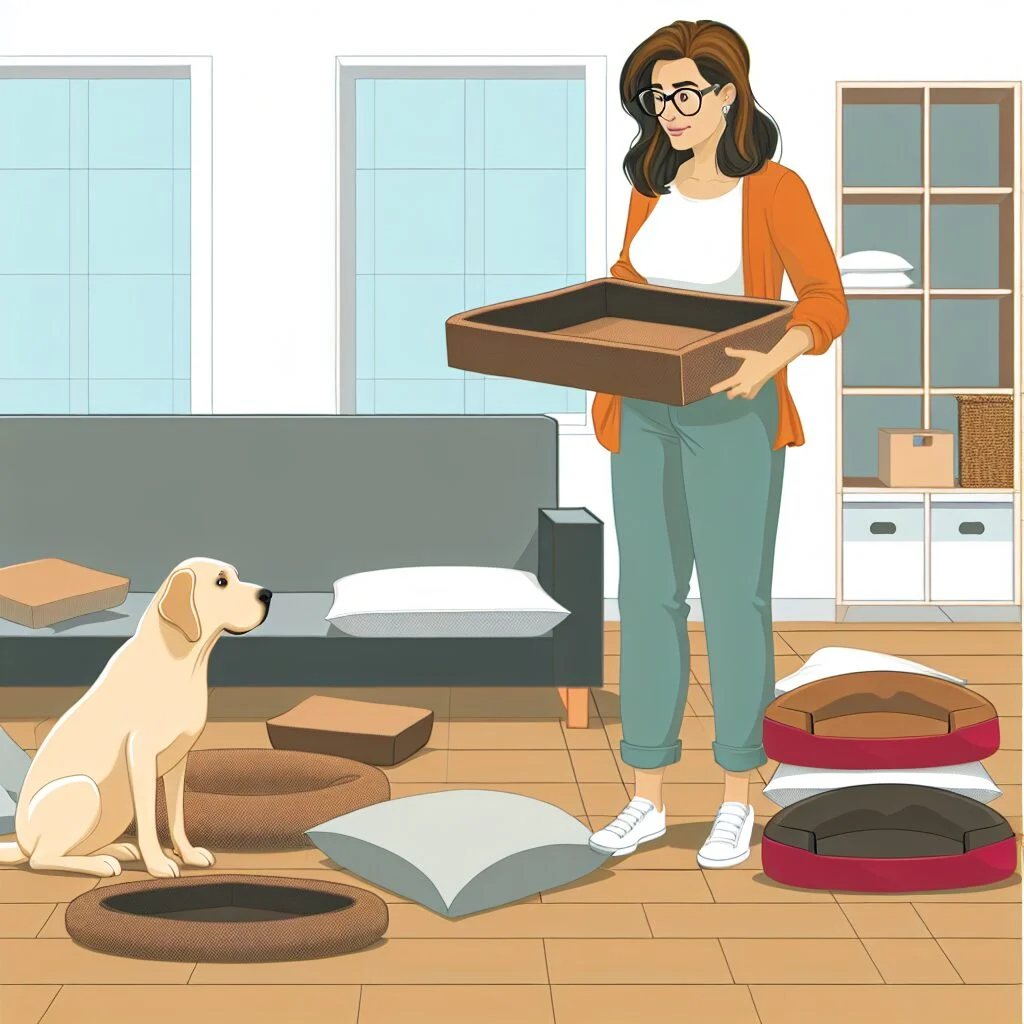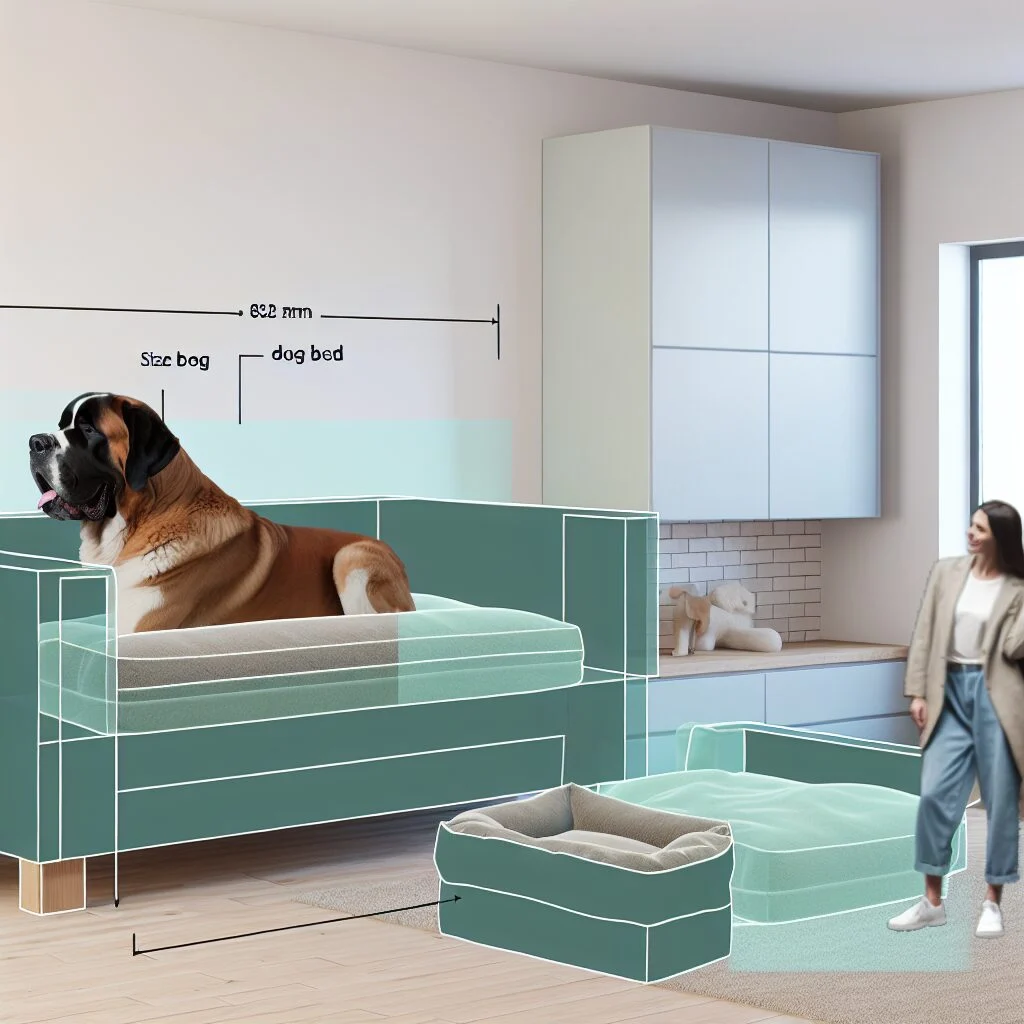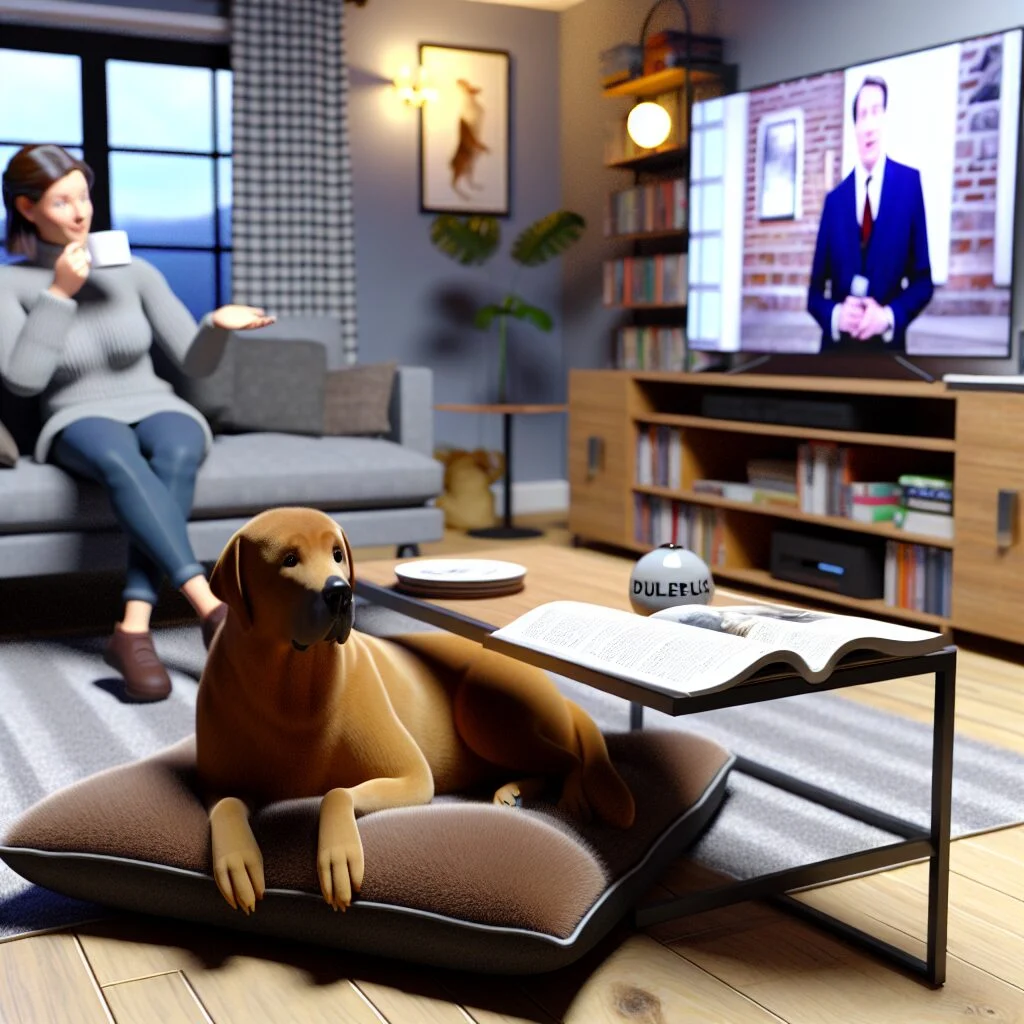The Ultimate Guide to Human Bed Dog Solutions: Finding Harmony in Your Sleeping Arrangement
For many pet parents, bedtime presents a nightly dilemma. Do you let your furry friend share your human bed, or should they have their own sleeping space? This comprehensive guide explores the best solutions for ensuring both you and your canine companion get a good night’s rest. From elevated dog beds that attach to your mattress to effective training techniques, we’ll cover everything you need to know about creating the perfect sleeping arrangement with your four-legged family member.
Why Dogs Want to Sleep in Human Beds (And Why It Might Be a Problem)
Dogs are pack animals by nature, and in your home, you’re part of their pack. This innate desire for closeness often translates to your dog wanting to sleep with you. While cuddling with your pup can be comforting, there are several reasons why having your own separate sleeping spaces might be beneficial:
- Sleep quality concerns – Dogs often move around during the night, which can disrupt your sleep cycles.
- Hygiene issues – Dogs bring dirt, dander, and sometimes parasites into your bed.
- Space limitations – Larger dogs can take up significant bed real estate, leaving you with little room.
- Behavioral problems – Dogs allowed in human beds may develop territorial or possessive behaviors.
- Health considerations – People with allergies or respiratory issues may experience worsened symptoms.
According to veterinary behaviorists, establishing boundaries around sleeping arrangements can actually strengthen your bond with your dog by clearly defining household rules and expectations. A 2020 study from the Mayo Clinic Sleep Center found that while many pet owners who sleep with their dogs report feelings of comfort and security, about 20% experience some form of sleep disruption.
Innovative Solutions: Elevated Dog Beds That Attach to Human Beds
One revolutionary solution that’s gaining popularity is the elevated dog bed that attaches directly to your human bed. These ingenious products offer the best of both worlds – keeping your dog close while maintaining separate sleeping surfaces.
Benefits of Elevated Dog Beds
These specialized beds offer numerous advantages for both you and your canine companion:
- Proximity without invasion – Your dog feels close to you without taking up your sleeping space
- Same height comfort – Being elevated to mattress level means your dog doesn’t need to jump up and down
- Reduced anxiety – Dogs with separation anxiety benefit from the close proximity while learning boundaries
- Cleaner sleeping environment – Keeps pet hair, dander, and dirt off your bedding
- Better sleep for both – No more midnight repositioning or competing for blankets
- Safety for small or elderly dogs – Eliminates risks associated with jumping on and off high beds
Many elevated dog beds come with secure attachment mechanisms that ensure stability while connecting to your bed frame. These range from sturdy clamps to hook-and-loop systems designed to withstand movement without detaching during the night.
Top Elevated and Attachable Dog Bed Options
Based on extensive testing and customer reviews, here are some standout products worth considering:
| Product | Best For | Key Features | Price Range |
|---|---|---|---|
| PETIQUE Bedside Lounge | Medium-sized dogs | Decorative design, sturdy attachment, comfortable padding | $80-$120 |
| ZAOWU Cat Hammock Bed | Small dogs under 20lbs | Hammock style, plush nap mat, wire frame for stability | $35-$50 |
| DoggoRamps Bedside Platform | Larger dogs or seniors | Extra-sturdy construction, non-slip surface, height adjustable | $120-$180 |
| PupRest Bedside Sleeper | All sizes with changeable covers | Memory foam, removable/washable cover, universal attachment | $90-$150 |
When selecting an elevated dog bed, consider your dog’s size, sleeping habits, and your bed’s construction. Measure your bed height carefully to ensure the attached dog bed will be at the appropriate level for comfortable access. Most models are designed to work with standard bed frames, but special adaptors may be necessary for platform beds or adjustable bases.
Training Your Dog to Sleep in Their Own Bed: A Step-by-Step Guide
Whether you’re introducing a new attached dog bed or transitioning your pet to a traditional floor bed, proper training is essential for success. With patience and consistency, you can teach even the most persistent bed-hogger to appreciate their own sleeping space.
Preparing for Successful Bed Training
Before beginning the training process, set yourself up for success with these preparatory steps:
- Choose the right bed – Select a bed appropriate for your dog’s size, age, and sleeping preferences. Some dogs prefer bolstered sides for security, while others like flat open surfaces.
- Create an enticing space – Make the dog bed appealing by adding a special blanket with your scent or a favorite toy.
- Position strategically – Initially place the bed in a location your dog already enjoys resting, then gradually move it to its permanent spot.
- Establish a bedtime routine – Consistent pre-sleep activities signal to your dog that it’s time to wind down and prepare for sleep.
- Gather training treats – Have small, high-value treats ready to reward positive behavior during training sessions.
Remember that dogs thrive on routine and consistency. Any new sleep training plan will be most effective when implemented alongside regular exercise, mental stimulation, and consistent feeding times.
The Training Process: From Day One to Success
Follow these steps to effectively train your dog to sleep in their own bed:
Phase 1: Introduction and Positive Association
Begin by helping your dog develop positive feelings about their new bed:
- Introduce the bed during daytime when your dog is calm
- Use the command “Go to bed” or “Place” while gently guiding them to the bed
- Immediately reward with treats and praise when they approach or interact with the bed
- Practice short sessions multiple times daily, gradually extending the duration
- Never force your dog onto the bed as this creates negative associations
During this phase, focus exclusively on creating positive experiences with the new sleeping area. Your dog should begin to view their bed as a rewarding place to be.
Phase 2: Building Duration
Once your dog willingly goes to their bed on command, it’s time to build staying power:
- Ask your dog to go to their bed and reward them for complying
- Request a brief stay using whatever stay command they know
- Begin with just a few seconds, then gradually increase the time
- Reward calmly while they remain on the bed (avoid exciting them)
- Release with a consistent release word like “OK” or “Free”
- Practice during different times of day, not just bedtime
Consistency is crucial during this phase. If your dog leaves their bed before being released, gently guide them back without punishment and try again with a shorter duration.
Phase 3: Nighttime Implementation
Now it’s time to incorporate the bed into your nighttime routine:
- Ensure your dog has adequate exercise during the day to promote natural tiredness
- Establish a consistent bedtime routine (final potty break, quiet time, etc.)
- Direct your dog to their bed as part of this routine
- Provide a long-lasting treat like a stuffed Kong to create positive association
- If using an elevated attached bed, sit beside them while they settle
- For traditional dog beds, you may need to sit nearby initially
When your dog attempts to join you in bed during the night, consistently redirect them to their own sleeping space. Be prepared for several nights of interrupted sleep as your dog adjusts to the new arrangement.
Phase 4: Reinforcement and Maintenance
After the initial training period, continue reinforcing the behavior:
- Periodically reward your dog for choosing their bed voluntarily
- Maintain the same bedtime routine consistently
- If regression occurs, return to earlier training phases temporarily
- Avoid sending mixed signals by sometimes allowing bed sharing
- Continue to make their bed comfortable and appealing
With consistent practice, most dogs will adapt to their new sleeping arrangements within 2-4 weeks. Some particularly determined dogs may take longer, so patience and persistence are key.
Common Challenges and Solutions in Dog Bed Training
Even with careful planning and consistent training, you may encounter some roadblocks along the way. Here are effective solutions for common challenges:
Dealing with Persistent Bed-Hopping
Some dogs are remarkably determined to share your sleeping space. If your dog continually jumps into your bed despite training:
- Consider a temporary barrier – A pet gate or closed bedroom door may be necessary initially
- Try a leash tether – Secure your dog to their bed area (only while supervised and with a comfortable radius)
- Evaluate timing – Ensure your dog has adequate exercise and mental stimulation during the day
- Check for discomfort – Rule out physical issues like joint pain or temperature sensitivity
- Be consistently firm – Any exceptions to the rule undermine your training effort
Remember that some dogs are more persistent than others. Breeds known for their stubbornness or strong attachment to owners may require additional patience and consistency during training.
Addressing Anxiety-Related Sleep Issues
Many dogs struggle with sleeping separately due to anxiety rather than disobedience:
- Gradual distance training – Start with the dog bed very close to yours, then incrementally move it further
- Comfort items – A t-shirt with your scent or a heartbeat toy can provide reassurance
- Calming aids – Consider dog-specific calming products like pheromone diffusers
- White noise – A sound machine can mask triggering noises and create a soothing environment
- Professional help – For severe anxiety, consult a veterinary behaviorist for additional strategies
An elevated attached dog bed often works particularly well for anxious dogs, as it maintains proximity while establishing boundaries. The position at your bed level can significantly reduce separation anxiety compared to a floor bed.
Creating the Perfect Dog Bed Environment
The comfort and appeal of your dog’s sleeping area play crucial roles in training success. By creating an irresistible sleeping space, you’ll make the transition much easier for your furry friend.
Selecting the Right Bed for Your Dog’s Needs
Different dogs have different sleeping preferences based on factors like age, size, breed, and health conditions:
- Memory foam beds – Ideal for senior dogs or those with joint issues, providing superior support
- Bolstered beds – Great for dogs who like to rest their heads on edges or feel secure with borders
- Cooling beds – Perfect for thick-coated breeds or dogs that tend to overheat
- Heated beds – Beneficial for small breeds, seniors, or dogs with arthritis in cooler climates
- Washable covers – Essential for maintaining cleanliness and extending bed lifespan
- Chew-resistant materials – Important for puppies or dogs that tend to destroy bedding
Take time to observe your dog’s natural sleeping positions and preferences. Do they curl up tightly or stretch out? Do they seek cool tiles or warm blankets? These observations will guide you toward the most suitable bed style.
Optimizing Bed Placement in Your Bedroom
Where you position your dog’s bed can significantly impact their willingness to use it:
- Temperature considerations – Avoid drafty areas or spots near heating vents
- Traffic patterns – Place the bed where it won’t be disturbed by nighttime movements
- Visual access – Many dogs prefer positions where they can see room entrances
- Proximity balance – Close enough for comfort but establishing separate space
- Noise factors – Consider sources of potentially disturbing sounds
For elevated beds attached to your mattress, test different positions (foot of bed vs. side) to see which works best for your room layout and your dog’s preferences. Some dogs prefer the foot of the bed where they can monitor the bedroom entrance, while others prefer the side for closer proximity to their humans.
Health and Behavioral Benefits of Separate Sleeping Spaces
Establishing separate sleeping areas offers numerous advantages beyond simply reclaiming your bed space. Both humans and canines can experience significant improvements in various aspects of health and behavior.
Benefits for Human Health and Sleep Quality
Research has shown that having your dog sleep in their own bed can positively impact your health:
- Improved sleep cycles – Fewer disruptions allow for better REM sleep phases
- Reduced allergic reactions – Less exposure to pet dander during sleep
- Better respiratory health – Particularly important for those with asthma or other breathing issues
- Decreased parasite exposure – Minimized risk of fleas or ticks transferring to your bedding
- Enhanced immune function – Quality sleep supports overall immune health
- Improved relationship dynamics – Better rest often leads to more patience and positive interactions
A study published in the Journal of Sleep Medicine found that people who shared beds with pets took approximately 4 minutes longer to fall asleep and experienced more disruptions throughout the night compared to those whose pets slept separately.
Positive Effects on Canine Behavior and Well-being
Dogs also benefit from having their designated sleeping areas:
- Clearer boundaries – Helps establish healthy household hierarchy
- Reduced separation anxiety – Learning to sleep independently builds confidence
- Better behavior – Dogs with clear boundaries typically show fewer problematic behaviors
- Appropriate comfort – Dog beds designed specifically for canine needs provide better support
- Temperature regulation – Dogs can regulate their body temperature more effectively
- Security feeling – Having their “den” provides psychological comfort
Professional dog trainers often note that dogs who sleep in their own beds tend to display fewer dominance-related behavioral issues and respond better to training in other areas as well.
When Co-Sleeping Makes Sense: Exceptions to Consider
While separate sleeping arrangements offer many benefits, there are situations where allowing your dog in your bed might be appropriate or even beneficial.
Legitimate Reasons for Bed Sharing
Consider these scenarios where co-sleeping may be the right choice:
- Medical monitoring – If your dog has a health condition requiring overnight monitoring
- Service dogs – Some service dogs need proximity to perform nighttime tasks
- Temporary exceptions – During thunderstorms or fireworks for dogs with noise phobias
- End-of-life care – Providing comfort to senior dogs in their final stages
- Single-person households – Where companionship and security benefits outweigh drawbacks
If you decide that co-sleeping works for your situation, establish clear rules about when and how your dog joins you to maintain some boundaries and prevent potential behavior problems.
Compromise Solutions for the Best of Both Worlds
For those seeking middle-ground options, consider these alternatives:
- Scheduled bed time – Allow your dog in bed for cuddle time before transitioning to their own bed
- Weekend exceptions – Maintain separate sleeping on weeknights but allow sharing on weekends
- Partial night arrangement – Start with your dog in their bed but permit joining later if needed
- Rotational system – For multiple pet households, create a schedule for which pet gets bed privileges
The elevated dog bed that attaches to your mattress represents perhaps the perfect compromise, allowing closeness without direct bed sharing. This option satisfies most dogs’ desire for proximity while maintaining separate sleeping surfaces.
Maintaining Your Dog’s Bed: Cleaning and Replacement Tips
To ensure your dog’s sleeping area remains appealing and hygienic, regular maintenance is essential. A clean, comfortable bed increases the likelihood your dog will choose to sleep there consistently.
Cleaning Routines for Different Bed Types
Different dog beds require different cleaning approaches:
| Bed Type | Cleaning Frequency | Recommended Method |
|---|---|---|
| Standard fabric bed with removable cover | Wash cover weekly; full bed monthly | Machine wash cover; spot clean foam/filling as needed |
| Elevated mesh bed | Biweekly | Hose down outdoors, scrub with pet-safe cleaner, air dry |
| Orthopedic/memory foam | Cover weekly; deep clean every 3 months | Machine wash cover; hand clean foam with mild soap, air dry completely |
| Attached bedside bed | Weekly or biweekly | Follow manufacturer instructions; typically removable covers |
Always check manufacturer guidelines before washing any dog bed. Use pet-safe detergents free from strong perfumes or chemicals that might irritate your dog’s skin or sensitive nose. For beds without removable covers, consider using a separate blanket or sheet that can be washed more frequently.
When to Replace Your Dog’s Bed
Even with excellent care, dog beds will eventually need replacement. Watch for these signs:
- Visible flattening – When padding no longer springs back or provides adequate support
- Persistent odor – Smells that remain despite thorough cleaning
- Tears or rips – Damage that exposes filling or creates safety hazards
- Visible mold or mildew – Indicates deep contamination that cleaning can’t resolve
- Changed sleeping behavior – Dog suddenly avoids or seems uncomfortable on the bed
- Support degradation – Particularly important for orthopedic beds for senior dogs
Quality dog beds typically last 1-5 years depending on the materials, usage, and your dog’s habits. Higher-quality beds generally offer better longevity, making them more economical in the long run despite higher initial costs.
Special Considerations for Multi-Dog Households
Homes with multiple dogs face additional challenges when establishing sleeping arrangements. Careful planning can help ensure harmony among all pack members.
Managing Multiple Dogs’ Sleeping Arrangements
Consider these strategies for multi-dog households:
- Individual beds – Provide each dog with their own sleeping space to prevent resource guarding
- Appropriate spacing – Position beds to respect each dog’s territorial needs
- Size matching – Ensure bed sizes are appropriate for each dog to prevent envy
- Similar comfort levels – Maintain comparable quality across all dog beds
- Consider relationships – Dogs that cuddle together during the day may share beds willingly
When introducing new sleeping arrangements in multi-dog homes, train each dog separately before expecting compliance from the entire group. This targeted approach prevents confusion and allows you to address individual challenges more effectively.
Dealing with Resource Guarding Around Beds
Some dogs may develop protective behaviors around their sleeping areas:
- Early intervention – Address the first signs of guarding immediately
- Positive associations – Create pleasant experiences around all dogs’ beds
- Supervised interactions – Monitor closely when dogs approach each other’s spaces
- Equal attention – Ensure no dog receives preferential treatment regarding bed time
- Professional help – Consult a certified behaviorist for severe guarding issues
Resource guarding can escalate quickly, so take proactive steps at the first signs of possessive behavior. Never punish growling, as this communication signals discomfort and suppressing it may lead to biting without warning.
Frequently Asked Questions About Human Bed Dog Arrangements
How long does it typically take to train a dog to sleep in their own bed?
Most dogs adapt to sleeping in their own beds within 2-4 weeks of consistent training. However, this timeline varies significantly based on your dog’s age, personality, previous habits, and your consistency with the training process. Puppies often learn more quickly than adult dogs with established sleeping habits. Dogs with anxiety issues may require additional time and patience. The key is maintaining absolute consistency – even one exception can significantly set back your training progress.
Are elevated dog beds that attach to human beds safe for all dogs?
While generally safe, attached elevated beds work best for small to medium-sized dogs (typically under 50-60 pounds, though weight limits vary by product). Always check the manufacturer’s weight recommendations before purchasing. These beds may not be appropriate for dogs with mobility issues who might struggle with the transition between surfaces. Additionally, puppies or very active dogs might require additional training to use these beds safely without jumping or falling. Always ensure the attachment mechanism is secure and regularly check for any loosening over time.
What should I do if my dog keeps leaving their bed during the night?
Consistently return your dog to their bed each time they leave it, using your established command word like “go to bed.” Avoid speaking excitedly or playing during these returns to prevent reinforcing the behavior. Ensure the bed is comfortable and positioned in an appropriate location (not too hot, cold, or drafty). Consider whether your dog needs a final potty break before bedtime. For persistent cases, you might temporarily use a leash tether system (only while supervised) or close your bedroom door. Remember that consistency is crucial – the behavior will likely get worse before it improves as your dog tests boundaries, but staying firm will eventually lead to success.
Which dog bed features are most important for encouraging use?
The most important features vary by individual dog, but comfort is universally crucial. Look for appropriate support based on your dog’s age and health status (orthopedic for seniors, standard for healthy adults). Size matters significantly – the bed should be large enough for your dog to stretch out completely but small enough to feel secure. Consider your dog’s temperature preferences; some dogs run hot and prefer cooling materials, while others seek warmth. Observe your dog’s natural sleeping positions – dogs who curl up prefer bolstered beds, while stretchers need flat, open surfaces. Finally, durability appropriate to your dog’s chewing habits ensures the bed remains usable long-term.
Is it ever too late to train an older dog to sleep in their own bed?
It’s never too late to train an older dog to sleep in their own bed, though it typically requires more time and patience than training a puppy. Senior dogs can absolutely learn new routines with consistent, positive reinforcement. The key is making transitions gradual – perhaps starting with the dog bed positioned directly beside your bed before moving it to its final location. Older dogs may have developed stronger preferences and habits, so extra emphasis on making their bed exceptionally comfortable is important. Consider using especially high-value rewards during training and ensure any health issues (like arthritis) are addressed with an appropriate orthopedic bed. With persistence and the right approach, dogs of any age can adapt to new sleeping arrangements.
What are the signs that a dog bed attached to a human bed isn’t working for my situation?
Signs that an attached dog bed isn’t working include: your dog consistently attempting to climb into your bed despite the attached option; the attachment mechanism failing to support your dog’s weight or movements; your dog showing reluctance or anxiety about using the elevated surface; the bed creating mobility issues for either you or your dog when entering/exiting the bed; or your sleep quality not improving despite the separate sleeping surface. In these cases, you might need to consider a traditional floor-level dog bed, a different attachment system, or in some cases, re-evaluating whether separate sleeping arrangements are right for your specific situation.
Finding the right sleeping arrangement for you and your dog is a personal journey that depends on numerous factors including your lifestyle, your dog’s personality, and both of your comfort preferences. Whether you choose an elevated attached bed, a traditional dog bed, or occasional co-sleeping with boundaries, consistency and positive reinforcement are the keys to success. With patience and the right approach, you can create a sleeping situation that ensures quality rest for everyone in the household – both human and canine.
For more information on dog training and behavior, visit the American Kennel Club training resources or consult with a certified professional dog trainer in your area.



